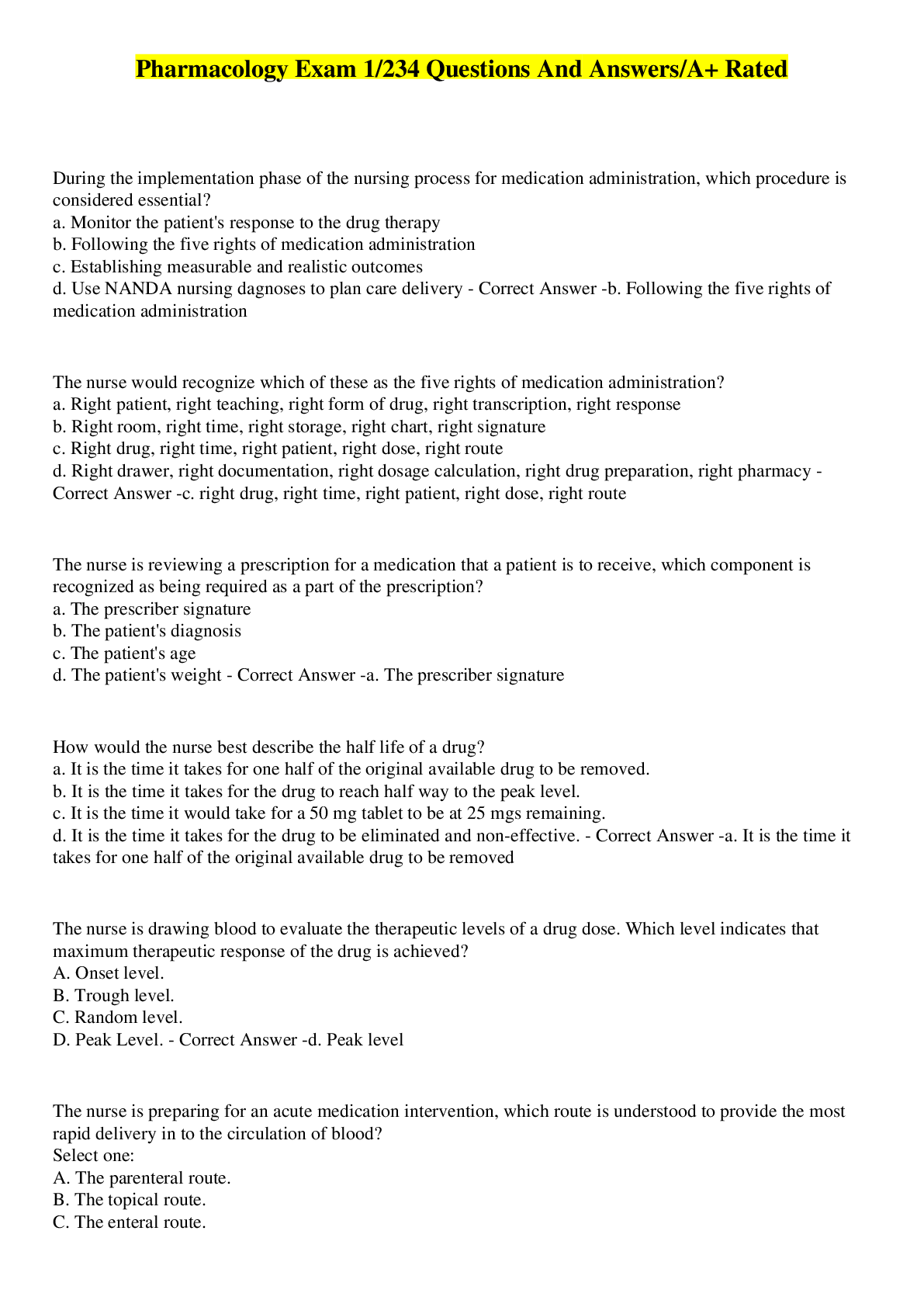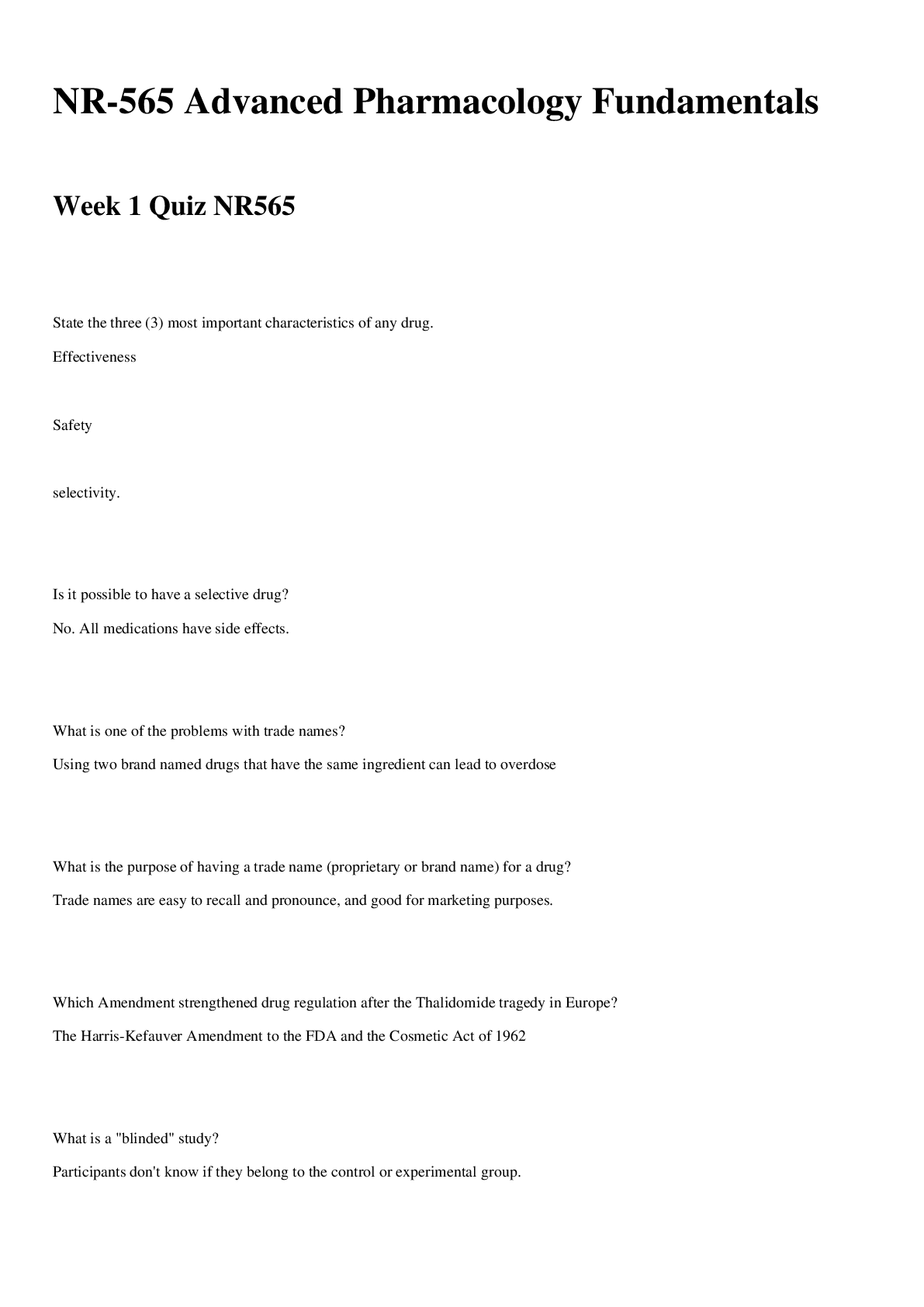Health Care > EXAM > NR 509 Midterm Exam / NR509 Midterm Exam (Latest 2020): Advanced Physical Assessment: Chamberlain Co (All)
NR 509 Midterm Exam / NR509 Midterm Exam (Latest 2020): Advanced Physical Assessment: Chamberlain College of Nursing
Document Content and Description Below
NR509 Midterm Exam 1) A 35-year-old man is seen in the clinic for an infection in his left foot. Which of these findings should the FNP expect to see during an assessment of this patient? Enl... arged and tender inguinal nodes 2) The direction of blood flow through the heart is best described by which of these Right atrium > right ventricle > pulmonary artery > lungs > pulmonary vein > left atrium > left ventricle 3) In assessing the carotid artery’s of an older patient with cardiovascular disease, the FNP would Listen with the bell of the stethoscope to assess for bruits 4) When listening to heart sounds the FNP knows that the valve closures that can be heard best at the base of the heart are Aortic and Pulmonic 5) The sack that surrounds and protects the heart is called the Pericardium 6) When assessing a newborn infant who is five minutes old the FNP knows that which of these statements would be true? There is an opening in the atrial septum we are blood can flow into the left side of the heart 7) The FNP is performing an assessment on an adult. The adults vital signs are normal and capillary refill is five seconds. What should the FNP do next? Consider this a delayed capillary refill time investigate further 8) During an assessment of an older adult the FNP should expect to notice which finding as normal physiologic change associated with aging process? Peripheral blood vessels growing more rigid with age producing a rise in systolic blood pressure 9) The mother of a three month old infant states that her baby has not been gaining weight. With further questioning the FNP finds that the infant falls asleep after nursing and wakes up after a short amount of time hungry again. What other information with the FNP want to have? Presence of dyspnea or diaphoresis one sucking 10) In assessing a patient’s major risk factors for heart disease which would the FNP want to include when taking a history? Smoking, hypertension, obesity, diabetes, high cholesterol 11) The FNP is assessing the pulses of a patient who has been admitted for untreated hyperthyroidism. The FNP should expect to find a____pulse Bounding 1 / 2 12) A patient complains of leg pain that wakes him at night. He states that he has been having problems with his legs. He has pain in his legs when they are elevated and disappears when he dangles them. He recently noticed a sore on the inner aspect of his right ankle. On the basis of this history information the FNP interprets that the patient is most likely experiencing Problems related to arterial insufficiency 13) During an assessment the FNP uses the profile sign to detect Early clubbing 14) Which of these statements describes the closure of the valves in a normal cardiac cycle? The tricuspid valve closes slightly later than the mitral valve 15) When performing a peripheral vascular assessment on a patient the FNP is unable to palpate the ulnar pulses. The patient skin is warm and capillary refill is normal. The FNP should next Consider this a normal finding and proceed with the peripheral vascular evaluation 16) A 67-year-old patient states that he “recently began have pain in his left calf when climbing the 10 stairs to his apartment”. This pain is relieved by sitting for about two minutes then he’s able to resume activities. The FNP interprets this patient is most likely experiencing Claudication 17) In assessing a 70-year-old man the FNP finds the following blood pressure 140/100 mmHg, heart rate 104 and slightly irregular, split S2. Which of these findings can be explained by expected hemodynamic changes related to age? Increase in systolic blood pressure 18) The FNP is examining the lymphatic system of a healthy three year old child. Which finding should the FNP expect? The presence of probable lymph nodes 19) The FNP is preparing to perform modified Allen test. Which is an appropriate reason for this test? To evaluate the adequacy of collateral circulation before cannulating the radial artery 20) A 25-year-old woman is in her fifth month of pregnancy has a blood pressure of 100/70 mmHg. In reviewing her previous exam the FNP notes that her blood pressure in her second month was 124/80 mmHg. When evaluating this change what does the FNP know to be true? This is the result of peripheral vasodilation and is an expected change 21) Findings from an assessment of a 70-year-old patient with swelling in his ankles include jugular venous pusations, 5 cm above the sternal angle when the head of his bed is elevated 45°. The FNP knows that this finding indicate: Elevated pressure related to heart failure 22) The component of the conduction system referred to as the pacemaker of the heart is the Sinoatrial (SA) node [Show More]
Last updated: 1 year ago
Preview 1 out of 3 pages

Reviews( 0 )
Document information
Connected school, study & course
About the document
Uploaded On
Jul 19, 2022
Number of pages
3
Written in
Additional information
This document has been written for:
Uploaded
Jul 19, 2022
Downloads
0
Views
43


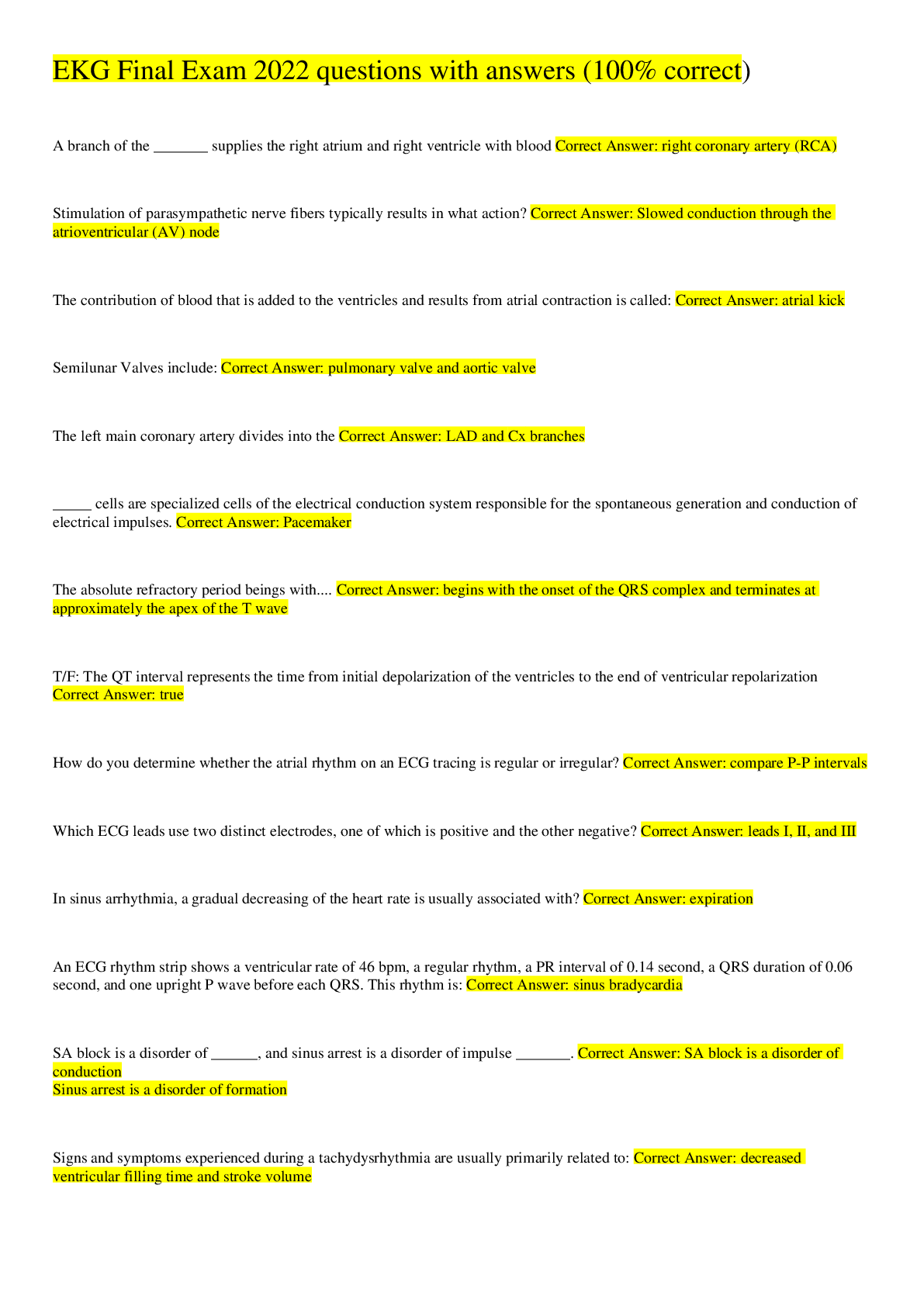
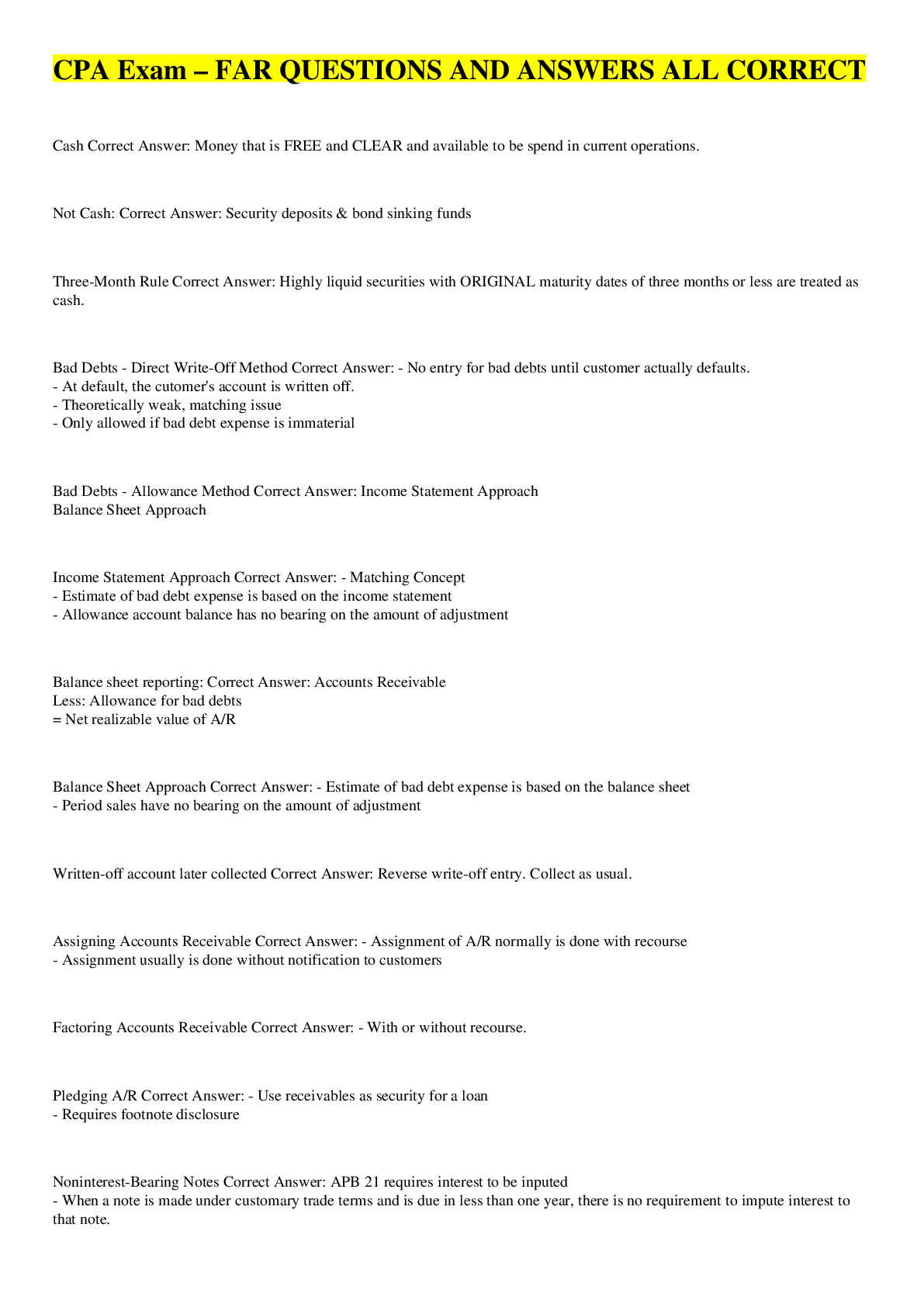
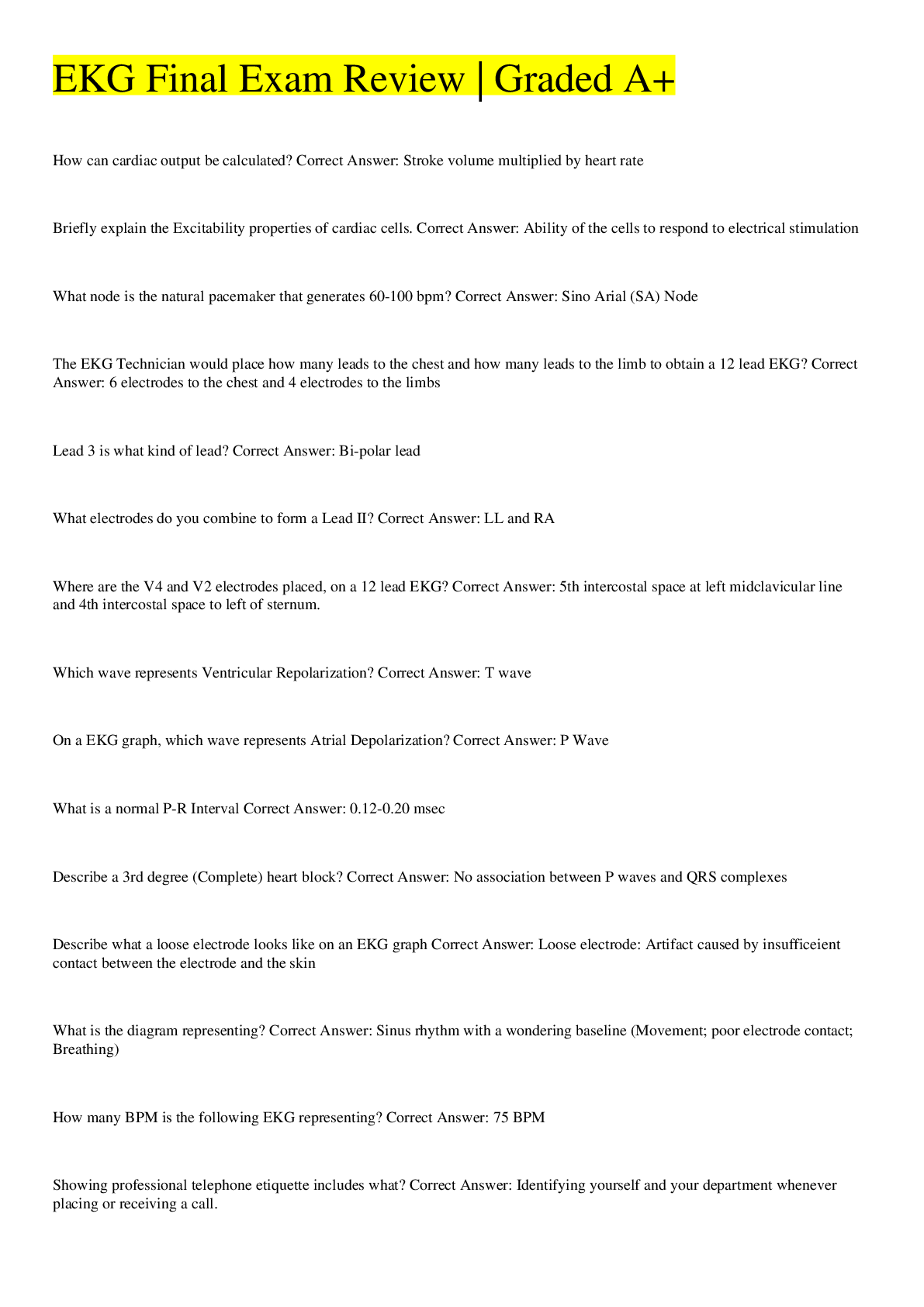
.png)

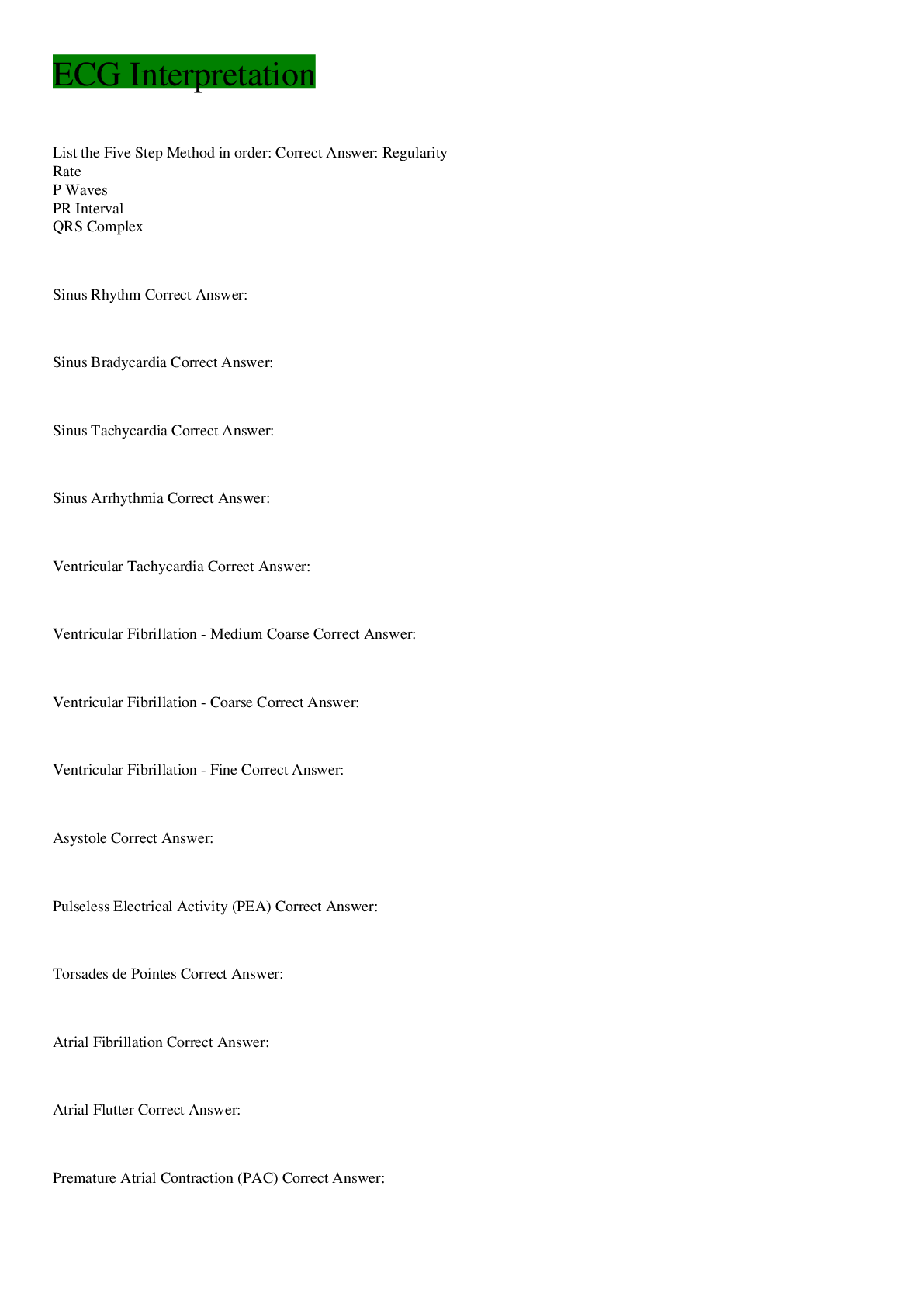


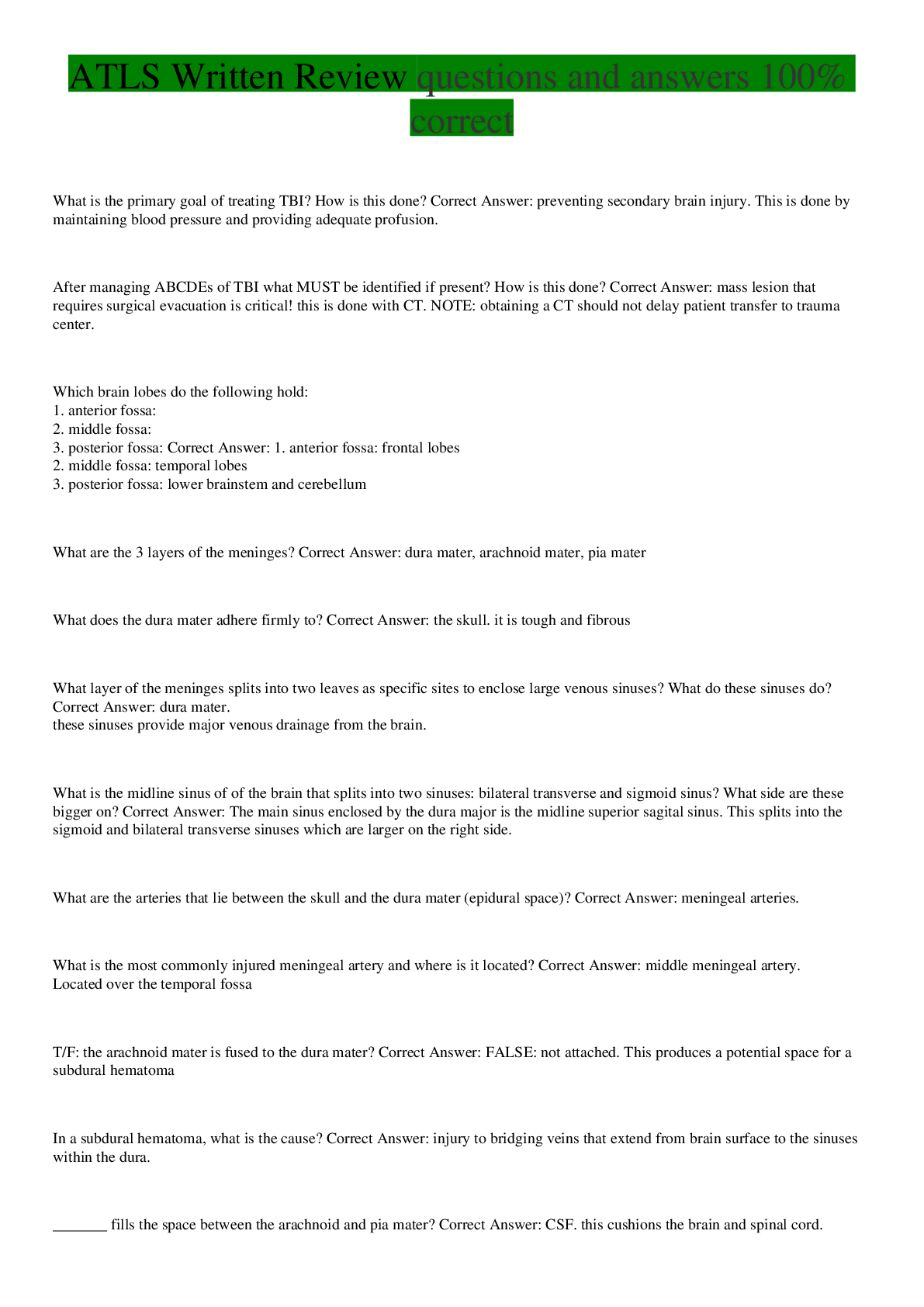
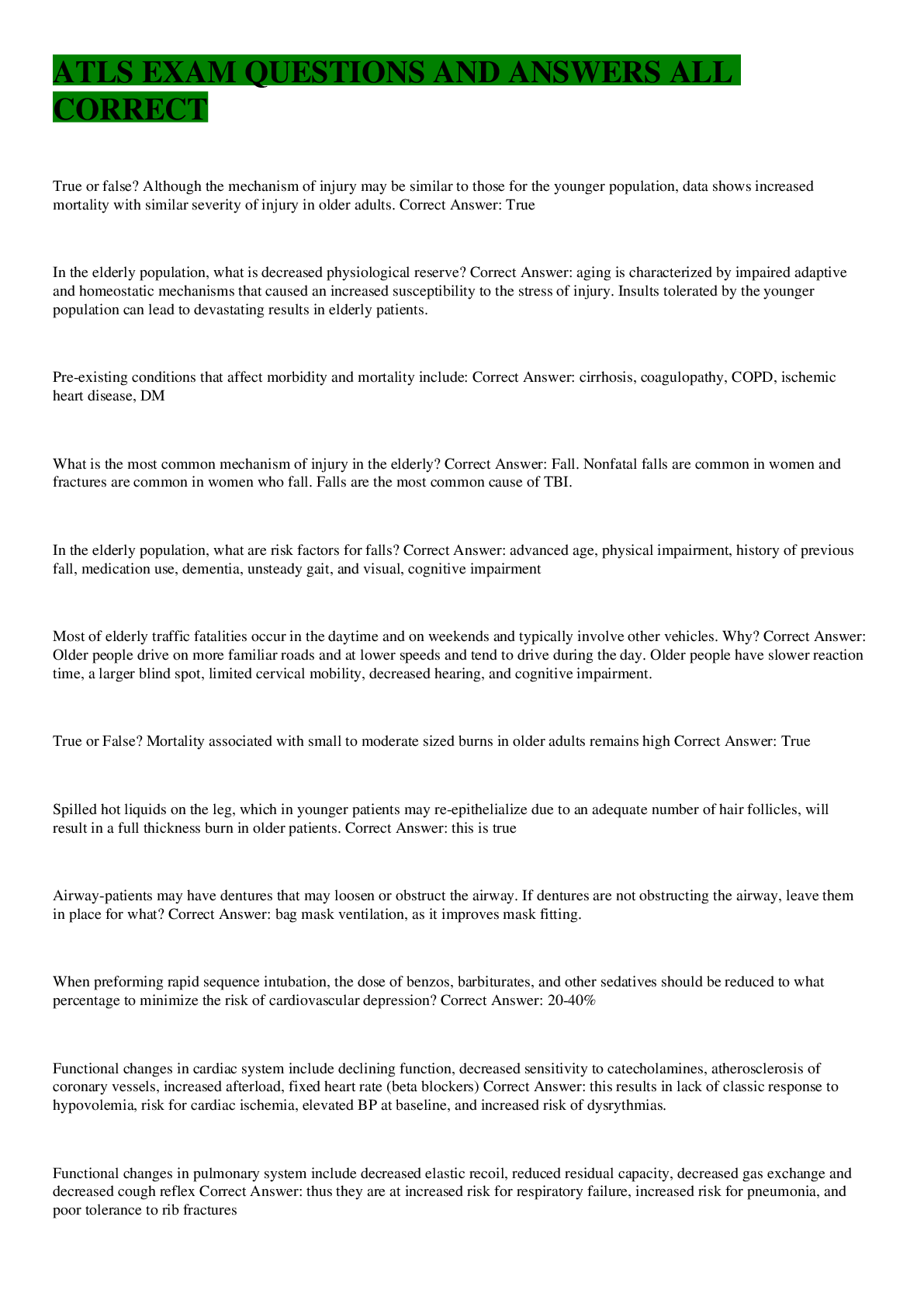


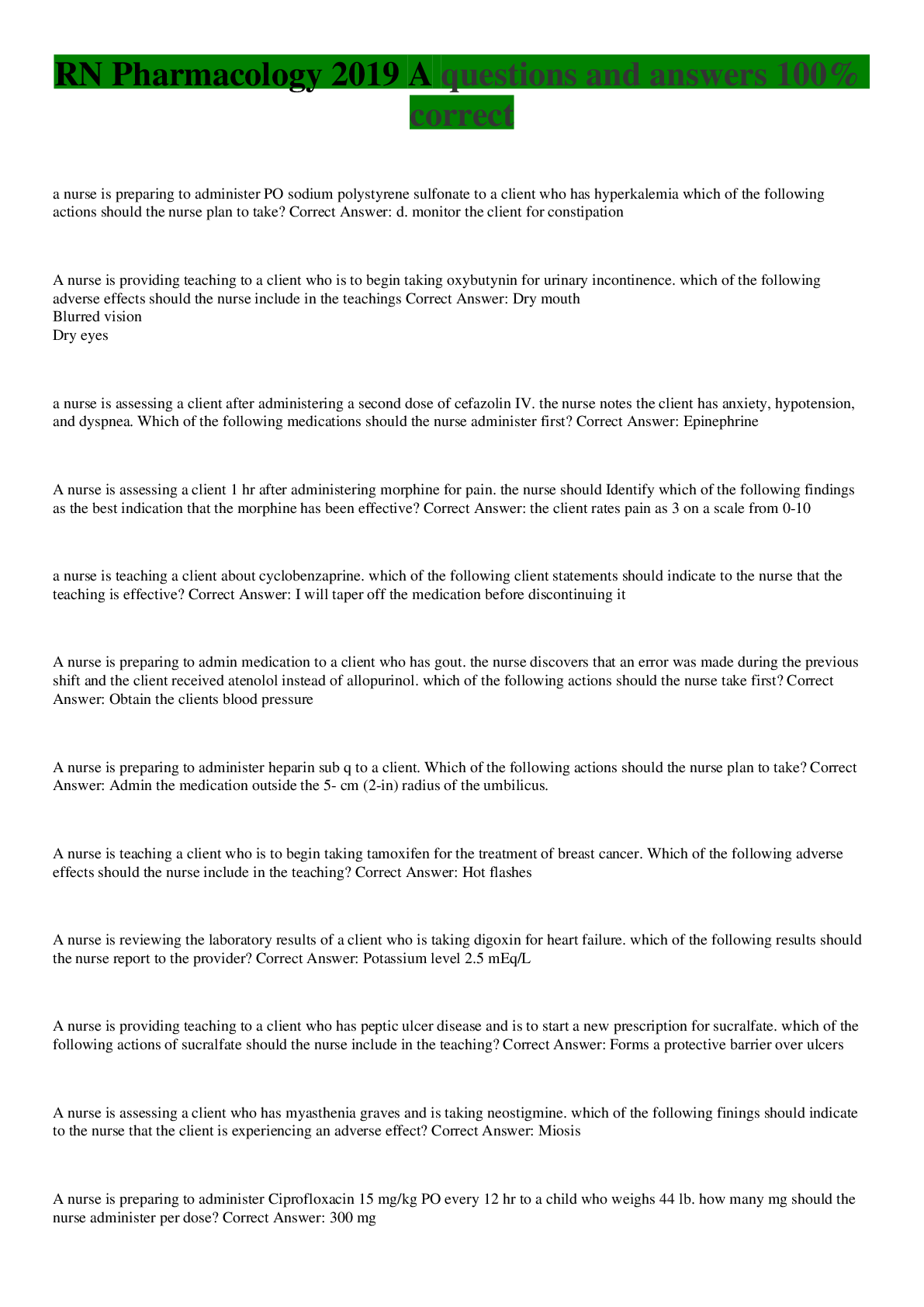
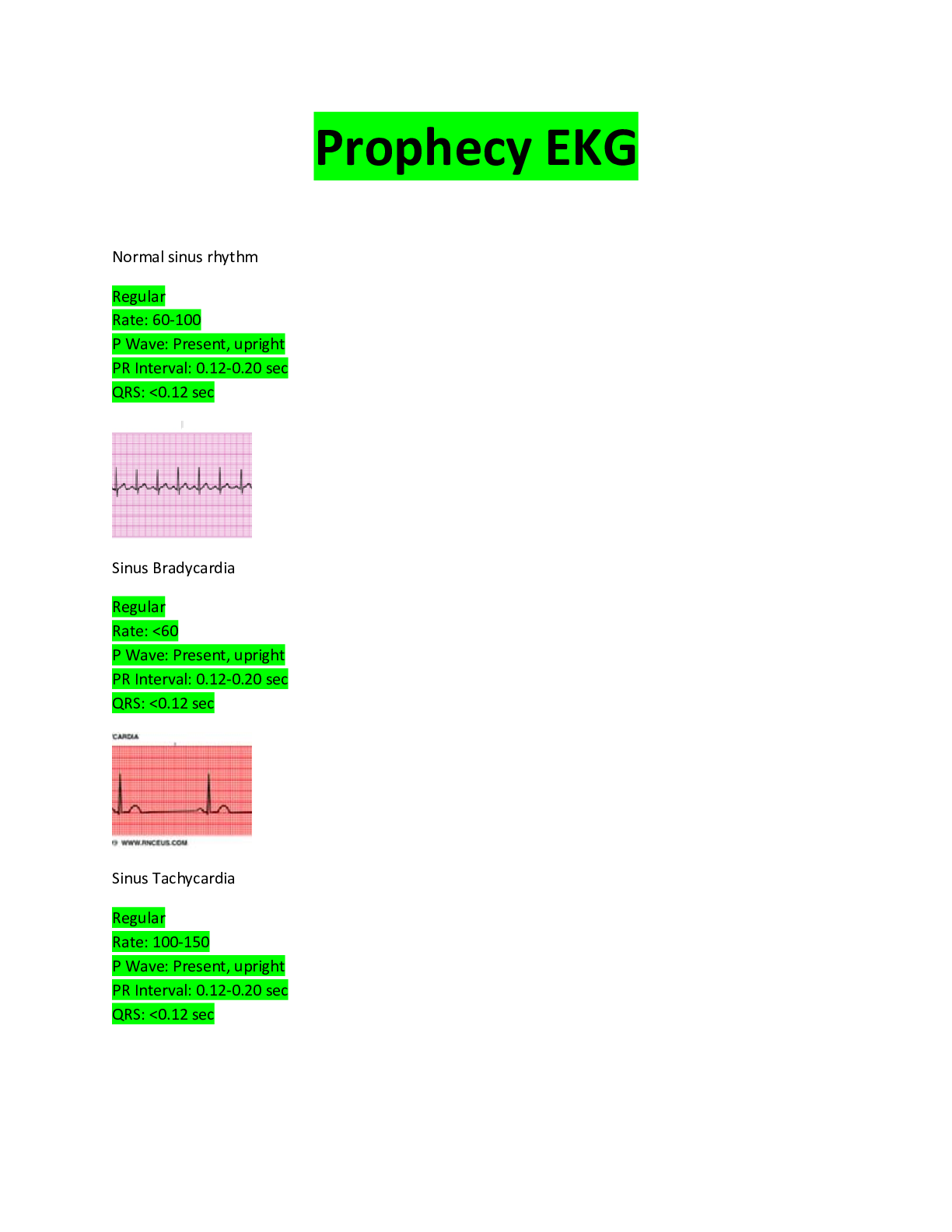



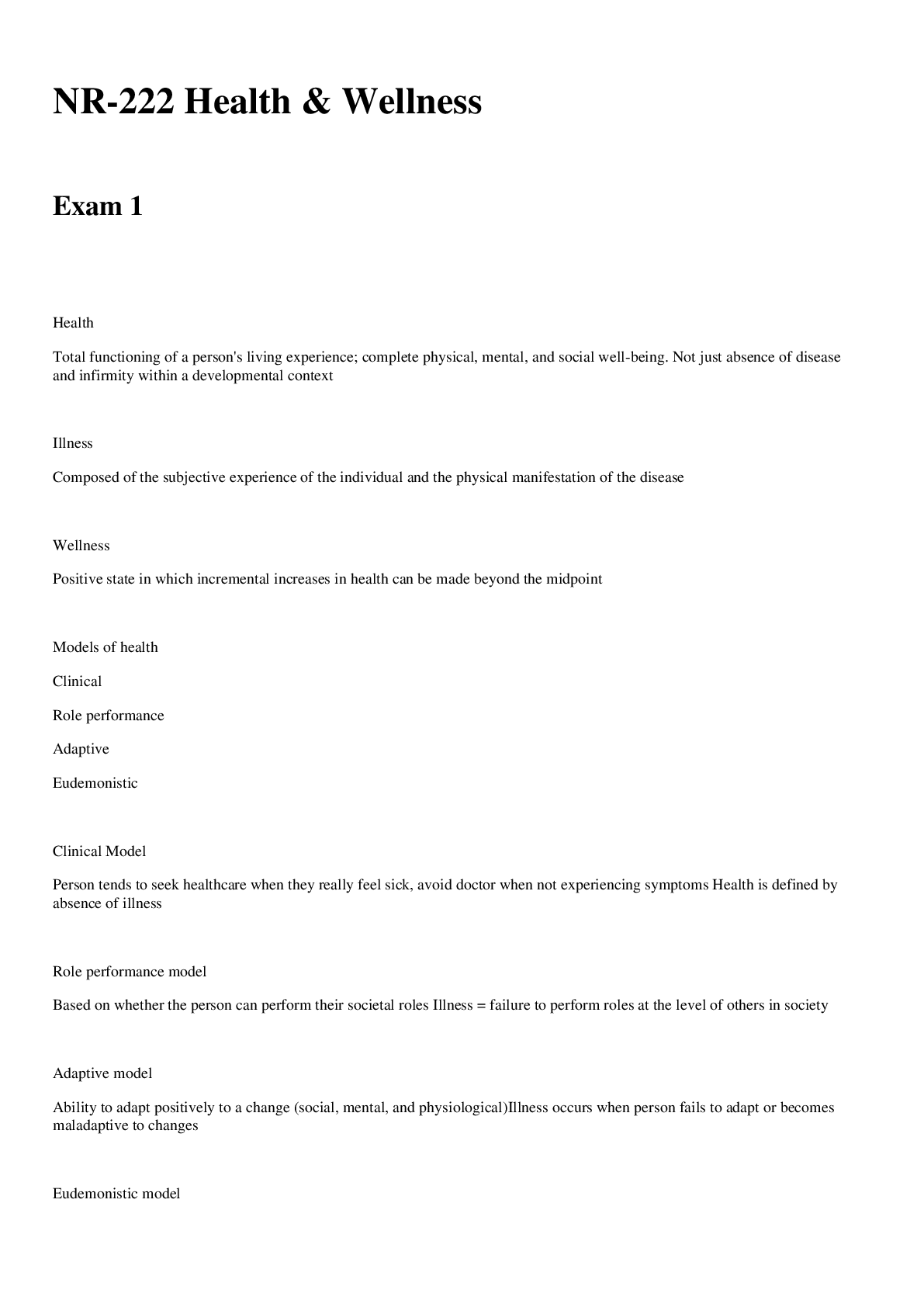



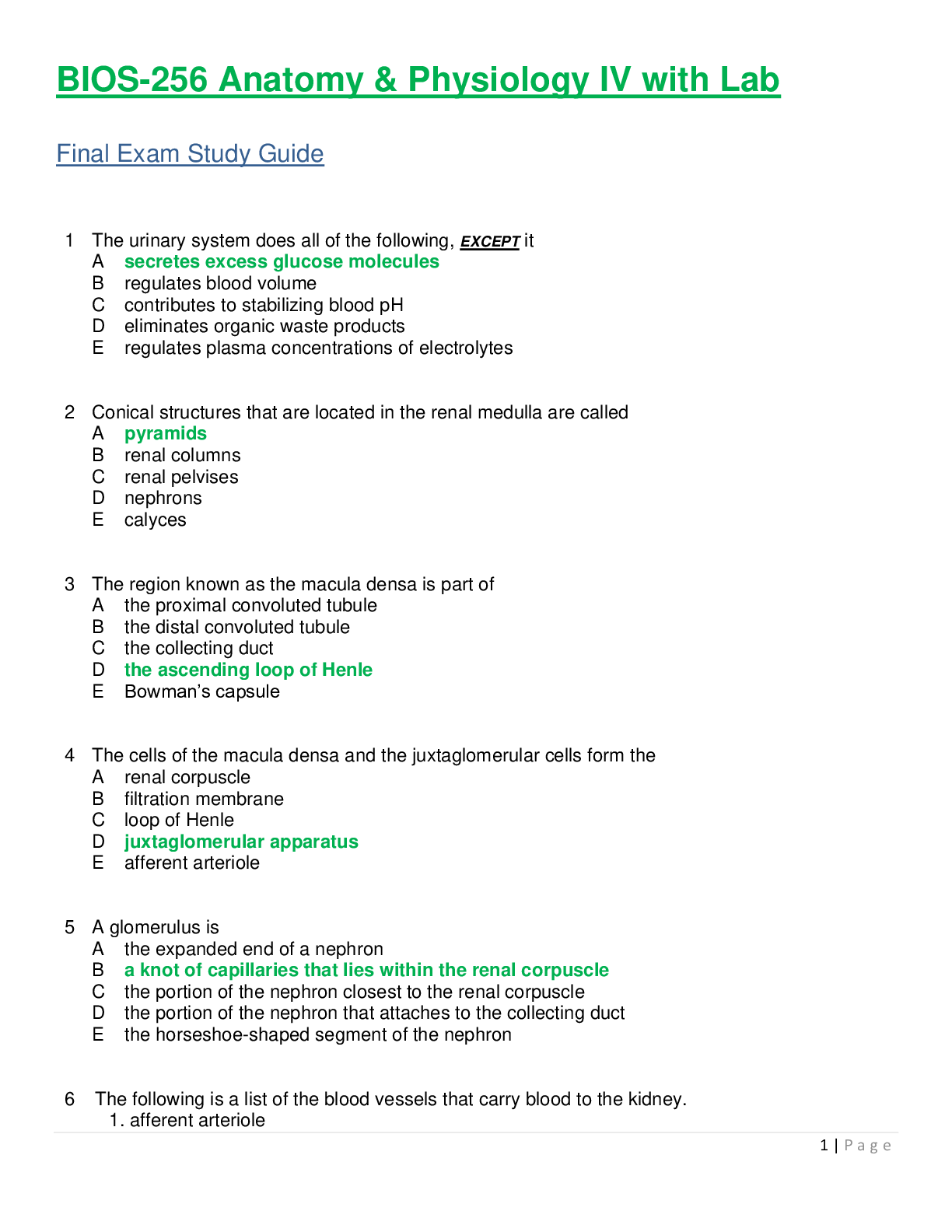


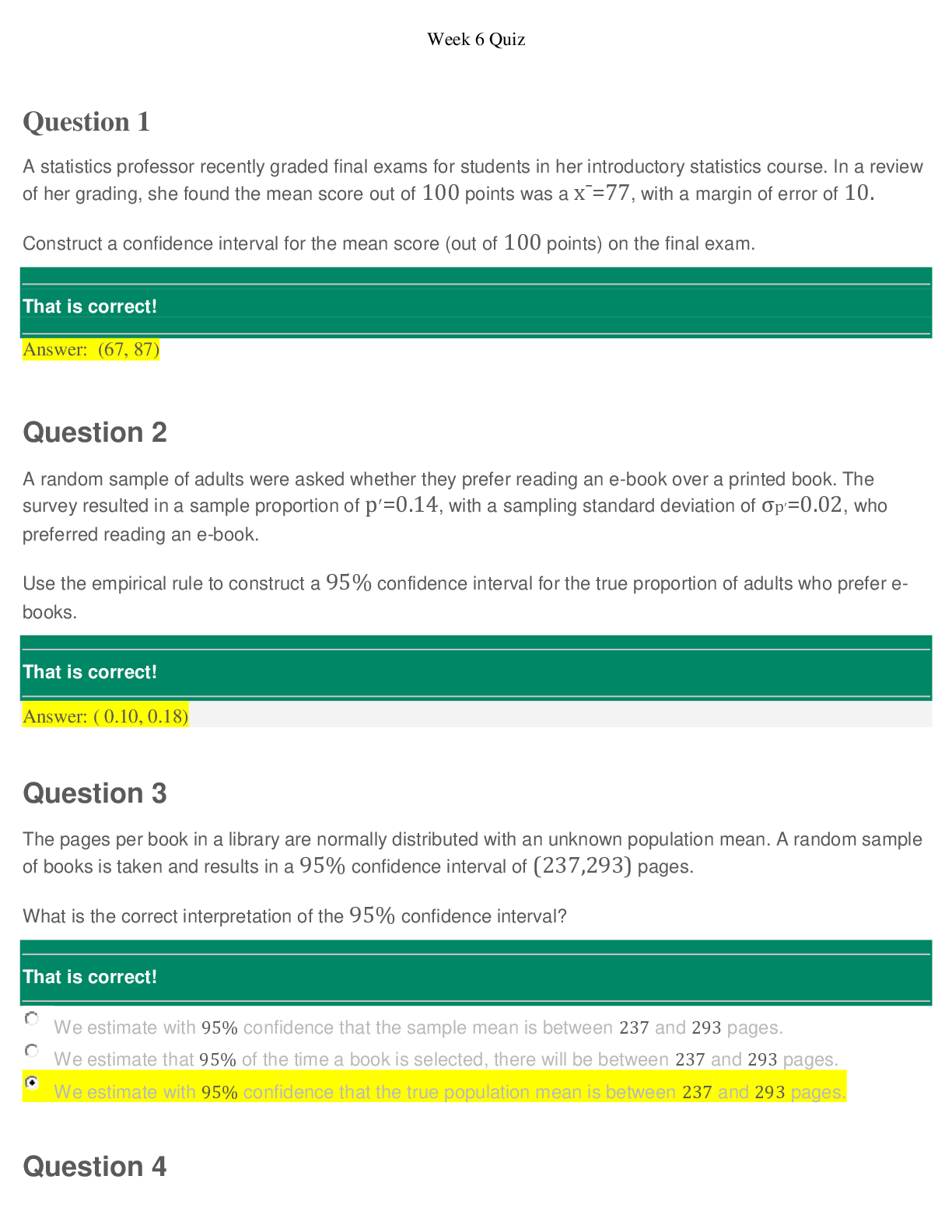

 – CHAMBERLAIN COLLEGE OF NURSING.png)


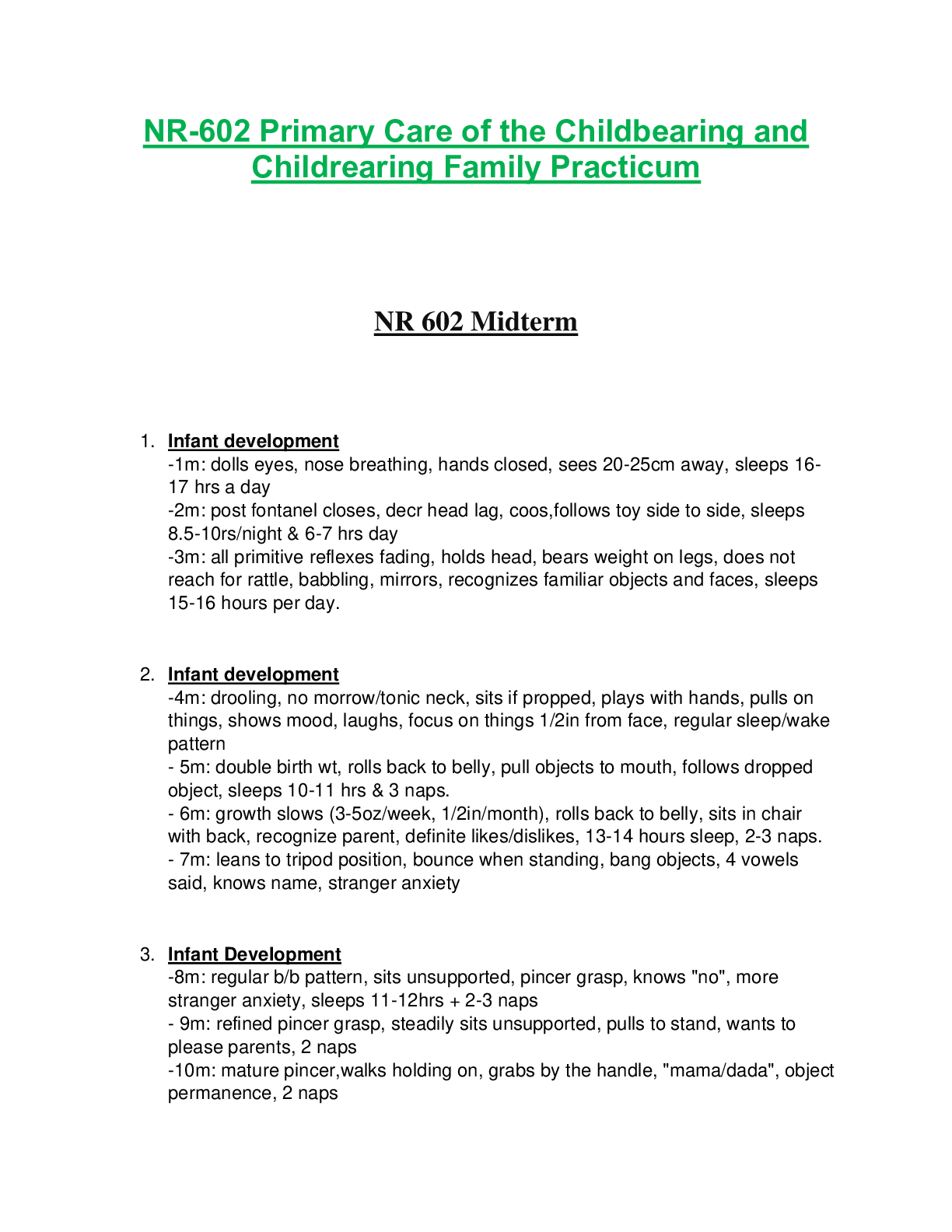
 – Chamberlain College of Nursing.png)

